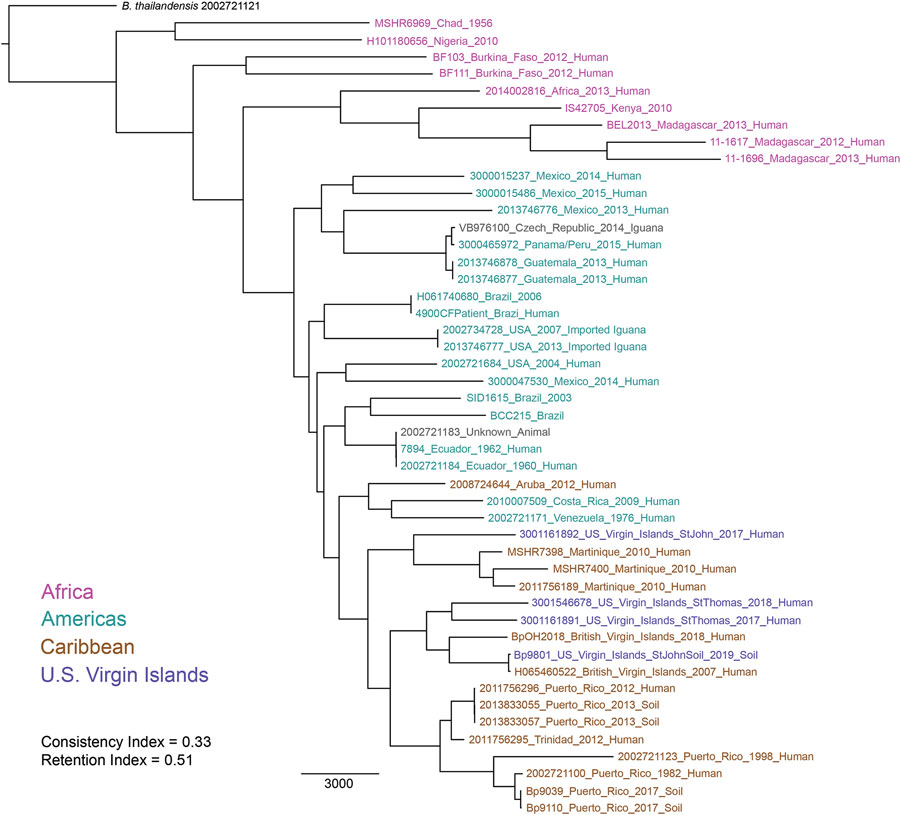Volume 26, Number 11—November 2020
Research Letter
Burkholderia pseudomallei in Soil, US Virgin Islands, 2019
Figure

Figure. Maximum-likelihood phylogeny of Burkholderia pseudomallei isolates from patients and the environment in the US Virgin Islands and reference isolates available in GenBank from other countries in the Americas, Africa, and the Caribbean.
Page created: August 06, 2020
Page updated: October 19, 2020
Page reviewed: October 19, 2020
The conclusions, findings, and opinions expressed by authors contributing to this journal do not necessarily reflect the official position of the U.S. Department of Health and Human Services, the Public Health Service, the Centers for Disease Control and Prevention, or the authors' affiliated institutions. Use of trade names is for identification only and does not imply endorsement by any of the groups named above.